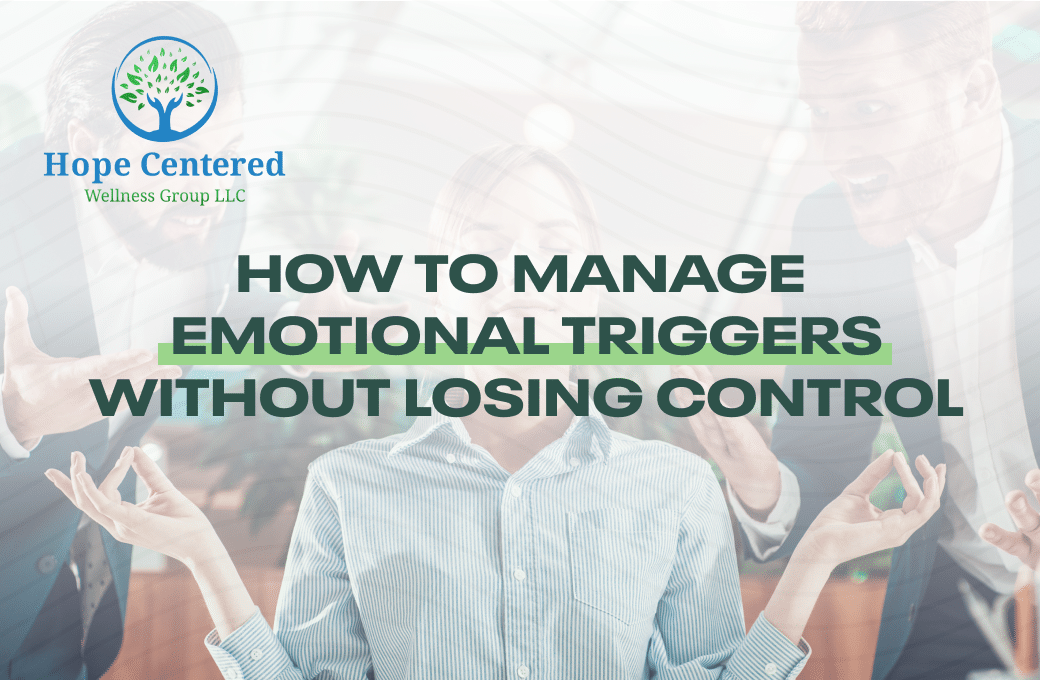Understanding Emotional Triggers In today’s fast-paced world, emotional ups and downs are inevitable — but learning how to manage emotional triggers can transform the way you handle stress, conflict, and everyday challenges. Emotional triggers are moments or experiences that spark strong reactions such as anger, sadness, or anxiety. When you know how to control your emotions and respond calmly instead of reacting impulsively, you gain greater mental clarity, stronger relationships, and improved emotional well-being.
If you find your triggers becoming overwhelming, professional therapy or counseling can help. (You can explore our therapy options at Hope Centered for personalized support.)
Why Managing Emotional Triggers Matters
When left unchecked, emotional triggers can lead to arguments, anxiety, or even burnout. Managing emotional triggers is not about suppressing feelings — it’s about responding consciously. Studies published on Psychology Today highlight that people who learn emotional regulation techniques report higher emotional intelligence and better relationships.
Identify Your Emotional Triggers
One of the best ways to manage emotional triggers is to recognize them before they take control. Common triggers include:
- Feeling ignored or rejected
- Facing criticism
- Experiencing lack of control
- Remembering a traumatic event
Keep a “trigger journal” to track moments that spark strong emotions. Over time, patterns will emerge, helping you predict and manage emotional responses effectively.
Practice Emotional Regulation Techniques
To handle emotional triggers, you must train your mind and body to stay calm.
Try these methods:
- Pause before reacting – take a few deep breaths.
- Grounding exercises – notice five things around you.
- Reframe your thoughts – challenge the negative narrative.
- Meditation or mindfulness – focus on the present.
Regular practice helps you respond with clarity instead of emotional impulse.
Reframe Negative Thoughts
Often, emotional triggers stem from distorted thinking. Cognitive Behavioral Therapy (CBT) techniques — such as reframing negative thoughts — can help you detach emotions from situations. You can read more about CBT on Verywell Mind.
Build Emotional Resilience
Building resilience helps you bounce back faster when triggered. Engage in regular self-care, connect with positive people, and maintain healthy boundaries. Emotional strength grows when you consistently manage your thoughts and reactions.
You can also explore our blog on Overcoming Burnout to learn how emotional resilience supports mental well-being.
Seek Professional Help When Needed
Sometimes emotional triggers are rooted in deep-seated trauma or chronic stress. Professional help from licensed therapists or counselors can make a significant difference.
If you’re struggling to manage emotional triggers, visit our Hope Centered Counseling Services to find the right therapist for you.
Final Thoughts
Learning how to manage emotional triggers without losing control is a lifelong skill that improves relationships, productivity, and self-esteem. With mindfulness, self-awareness, and the right coping tools, you can regain control and create a calmer, more balanced life.



